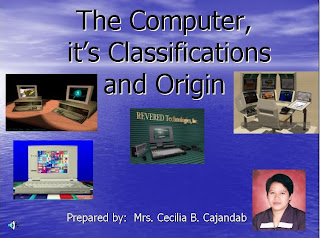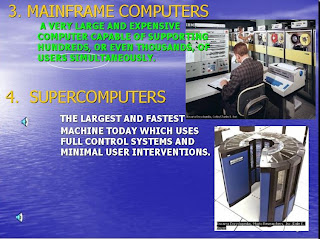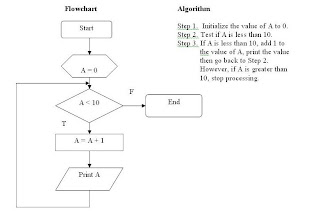















You can find computer here, there, and everywhere. Majority of works in all aspect of business need computer. No wonder this great invention makes a lot of money and helping many individual to raise their living.
Turbo C 2.0 is a popular version of the C programming language, designed for IBM personal computers and compatibles.
The Turbo C package contains two interrelated sets of tools – the LANGUAGE and the DEVELOPMENT ENVIRONMENT:
The C language provides the operations, instructions, and commands that you use to build your own programs.
The Turbo C development environment is a collection of menus, windows, and useful features that simplify the process of creating C programs.
Turbo C was a Borland IDE (Integrated Development Environment) and compiler for the C programming language. It was introduced in 1987 and was noted for its IDE, small size, speed, manuals and low price. It was replaced with Turbo C++ in May 1990. In 2006, Borland reintroduced the Turbo moniker.
HISTORY OF C LANGUAGE
In the year 1970, Ken Thompson developed B language, a successor of BCPL (Basic Command Programming Language). BCPL was developed by Martin Richards. To boost B’s power, Dr. Dennis Ritchie invented the C programming language at AT&T Bell Laboratories, New Jersey, U.S.A.
At first, C was under UNIX environment, it stands for CPL (Combined Programming Language) also called SPL (System Programming Language). After C creation it took almost six years before it became popular, thanks to Brian Kernighan and Dennis Ritchie for introducing their book called “THE C PROGRAMMING LANGUAGE”. Because of this book C was known by many people when they read and learned the usefulness of the language.
C is a middle-level language, combining the power of low-level language (like Assembly Language) and the elegance of high-level language (like Pascal). It can directly manipulate the bits, bytes, and the computer hardware memory addresses.
C language reserved words are case sensitive and therefore should be written in lower case. It has 32 keywords, 27 of which came from Kernighan and Ritchie, the remaining 5 is from ANSI Standardization Committee.
POINTERS TO REVIEW:
KEN THOMPSON – developed B language in the year 1970.
Martin Richards – developed BCPL (Basic Command Programming Language).
Dennis Ritchie – invented the C programming language at AT & T Bell Laboratories,
Brian Kernighan and Dennis Ritchie – created a famous book called “THE C PROGRAMMING LANGUAGE” after then the C language become popular.
VERSION HISTORYINTERS TO REVIEW:
me from Kernighan and Ritchie, the remaining 5 is fromanguage) and the elegance of high-level
VERSION 1.0
The first integrated edit-compile-run development environment for C on IBM PCs developed on
TURBO C 1.0 START UP SCREEN

VERSION 1.5
It has more sample programs, improved manuals and bug fixes developed on January 1988. It was introduced on five 360KB diskettes of uncompressed files with sample C programs, including mcalc (stripped down spreadsheet). This version uses
TURBO C 1.5 START UP SCREEN
VERSION 2.0
The first “blue screen” version released by American in late 1988. The American release did not have Turbo Assembler or a separate debugger. It was sold together as professional suite of tools which includes Turbo C, Asm, and Debugger. Another release featured Turbo Debugger, Turbo Assembler and graphics library.
VERSION 2.0 START UP SCREEN

Please take note that the name “Turbo C” was used after version 2.0, it is because Turbo C and Turbo C++ (1990) were folded into a single product. The next version was named Borland C++ eventually reappearing as Turbo C++ 3.0. There was never a 2.0 of the Turbo C++ product series.
FLOWCHARTING & ALGORITHM
Flowcharting in computer programming is a diagram that shows the sequence of actions representing the logical flow of operations in a process. It is the step-by-step progression through a procedure using connecting lines and a set of conventional symbols. It is also considered as the blueprint of the program and a schematic representation of an algorithm or a process.
Algorithm in computer programming is a finite set of instructions that shows the logical sequence of steps to be carried out in order to solve a specific problem, often written out as a flow chart that can be translated into a computer program.
FLOWCHARTING BASIC SYMBOLS
TERMINAL – marks the beginning and end of flowchart.
PREPARATION/INITIALIZATION – used to prepare data or select initial conditions.
INPUT/OUTPUT – display input (data read into computer memory by an input device) and output (data passed from computer memory by an output device)
PROCESSING – carry out any calculations that are to be done
DECISION – used when decisions are to be made by using alternatives execution
OFF-PAGE CONNECTOR – used to connect one part of a flowchart from one page to another page.
ARROW LINE - shows the process that is to be executed next
FLOWCHARTING BASIC CONTROL STRUCTURES
1. SEQUENCE – a control structure wherein the course of action is executed in a straightforward manner – See examples below:
2. SELECTION (IF-THEN-ELSE) – a control structure wherein the course of action has a choice between two alternatives - See example below:

3. REPETITION (LOOPING) – a control structure wherein the course of action has a repetitive execution of an operation as long as the condition is true, otherwise, control flows out of the structure. Also known as DO-WHILE structure.
EXAMPLE: Construct a flowchart that will count from 1 to 10 and print each number counted using the do-while repetition structure. Use A as variable for the number to be counted. Write its equivalent algorithm.

OPERATORS COMMONLY USED IN FLOWCHARTING
OPERATORS MEANING
1. ARITHMETIC OPERATORS
+ addition
- subtraction
* multiplication
/ division
2. RELATIONAL OPERATORS
= equal
> greater than
< less than
< > not equal
> greater than or equal to
< less than or equal to
3. LOGICAL OPERATORS
&& AND
|| OR
! NOT
TEST YOURSELF
Applying the lessons you have learned in this site, do the following exercises:
1. Construct a flowchart that will convert an inputted number in Fahrenheit to its equivalent measure in Celsius. Use variable C for Celsius and F for Fahrenheit then Celsius for the output. Write its equivalent algorithm. (Clues: Formula: C=(5/9) x (F-32); use sequence control structure)
2. CBC Manufacturing Company plans to give a year-end bonus to each of its employee. Draw a flowchart which will compute the bonus of an employee. Consider the following conditions: If the employee’s monthly salary is less than 5,000 pesos, the bonus is 75% of the salary; for employees with salaries greater than 5, 000 pesos, the bonus is 2,500 pesos. Print the name and the corresponding bonus for each employee. Use variable B for bonus, S for salary, and N for name. Write each equivalent algorithm. (Clue: use selection control structure)
3. The initial value of the radius of a circle is equal to 1 unit and each succeeding radius is 1 unit greater than the value before it. Draw a flowchart to compute the Area of a circle starting with R = 1 up to R = 10, then print each radius and the corresponding area of a circle. Use variable R for radius and A for the area of the circle. Write the algorithm. (Clue: use repetition control structure)
NOTE: If you are not sure of your answer or if you have any question about the topic feel free to email me. Please check my profile for contact details.
INTERNET short for International Networking a global computer network, also known as
It is a computer based global information system that transmits data by packet switching using the standard protocol (IP). Packet switching (data transmission technique) is a communications method in which packets (discrete blocks of data) are routed and transmitted sequentially and rapidly over a channel. A channel is occupied during the actual transmission on a “first come – first serve” basis.
Computers throughout the world are mostly connected using satellites or telephone lines. Its’ primary purpose is to share information.
INTERNET ACCESS
Dial Up
It uses a computer modem and telephone line to dial into an Internet Service Provider’s (ISP) node to establish communication with another computer or a network.
Digital information is sent over a high-bandwidth channel above the baseband (signal processing) voice channel on a single pair of wires. The wider the bandwidth the greater the information-carrying capacity. Compared to dial-up it double the speed and generally without disrupting telephone use. It is one of the forms of digital subscriber line (DSL).
Wi-Fi (wireless-fidelity)
A wireless technology used to certify the interoperability of computer networking devices. It is supported by nearly every modern personal computer operating system and most advanced game consoles. It is commonly used in home networks, mobile phones and video games.
SATELLITE
An earth-orbiting spacecraft that provides communication over long distances by reflecting or relaying radio-frequency signals. It is used in locations where terrestrial Internet access is not available and in locations which move frequently. It is available worldwide, including vessels at sea and mobile land vehicles.
3G (Third Generation)

TO SEARCH THE WEB:
1. Type the topic you want to search in the search box.
For example: internet.
COMING UP NEXT..." WHAT WE CAN DO IN THE INTERNET?"
The modes of transportation through high-powered transport facilities are getting faster and more reliable. Travel by land, water or air at no time is no longer impossible. Examples of modes of transport are: Aviation (Aircraft, Jetpack); Ship (Boat, Ferry, Submarine); Rail (Cable Car, Underground Railway); Road (Car, Motorcycle); Ski lift (Telecabine, Teleski); Other (Rocket, Spacecraft)
In medicine more drugs has been produced and most of the sickness were cured and may even be prevented. Thanks to the advance medical equipments and tools. For home type of medical equipment example includes: Air Ioniser, Air Purifier, Artificial limb, Breast Protheses, Cannula, Commodes, Continious Positive Airway Pressure, Crutch, Diabetic Shoes, Dynamic Splint, Enteral Nutrition, Elevating Toilet Seat, Infusion Pump, Nasal Cannula, Nebulizer, Orthosis, Oxygen concentrator, Patient lift, Positive Airway Pressure, Prosthesis, Respiratory Assist Devices, Seat lift, Walkers and Wheelchairs.
It's not only eating that is fun but as well as cooking. All because of the newly released amazing machines we have for food preparation. For food preparation utensils we have: Baba Mold, Bain Marie, Banneton, Busting Brush, Basting Syringe, Bench Scraper, Blender, Bone Scissors, Bread Knife, Browning Tray, Candy Thermometer, Can Opener, Casserole, Cauldron, Cheese Cloth, Cheese Grater, Cheese Slicer, Chief's knife, Chinoise, Colander, Cookie Cutter, Chop Sticks, Crockery, Cutting Board, Double Boiler, Drum Sieve, Egg Piercer, Egg Slicer, Egg timer, Faucet, Fillet Knife, Frying Pan, Idli/Pan Tray, Kitchen Scissors, Knife, Knife Grinder, Ladle, Lame, Lemon Reamer, Lemon Squeezer, Lemon Zester, Mandoline, Mated colander Pot, Measuring Cup, Measuring Spoon, Molcajete, Mortar, Muffin Tin, Nut Cracker, Oven Mitts, Pastry Bags, Pastry Brush, Peel(tool), Pestle, Pepper Mill, Pizza Cutter, Potato Masher, Potato Peeler, Potato Ricer, Potholder, Puree Sieve, Rolling Pin, Roulade Needles, Salamander, Salamander Grill, Salt Shaker, Scale, Scoop, Scraper, Sieve, Skillet, Skimmer, Slotted Spoon, Spatula, Spider, Stainless Steel Soap, Strainer, String, Sugar Spoon, Tamis, Timer, Tin Foil, Tongs, Toast-Tite, Tomato Knife, Vegetable Knife, Waffle Iron, Whisk and Wooden Spoon. For product, click here:> IRON COOKWARE
Now that most business operations and knowledge works are conducted in the digital domain via computers, and because we now have a global data communications network which does not restrict the type of data shared, technology is changing yet again. And it will continuously grows as long as the world needs it.